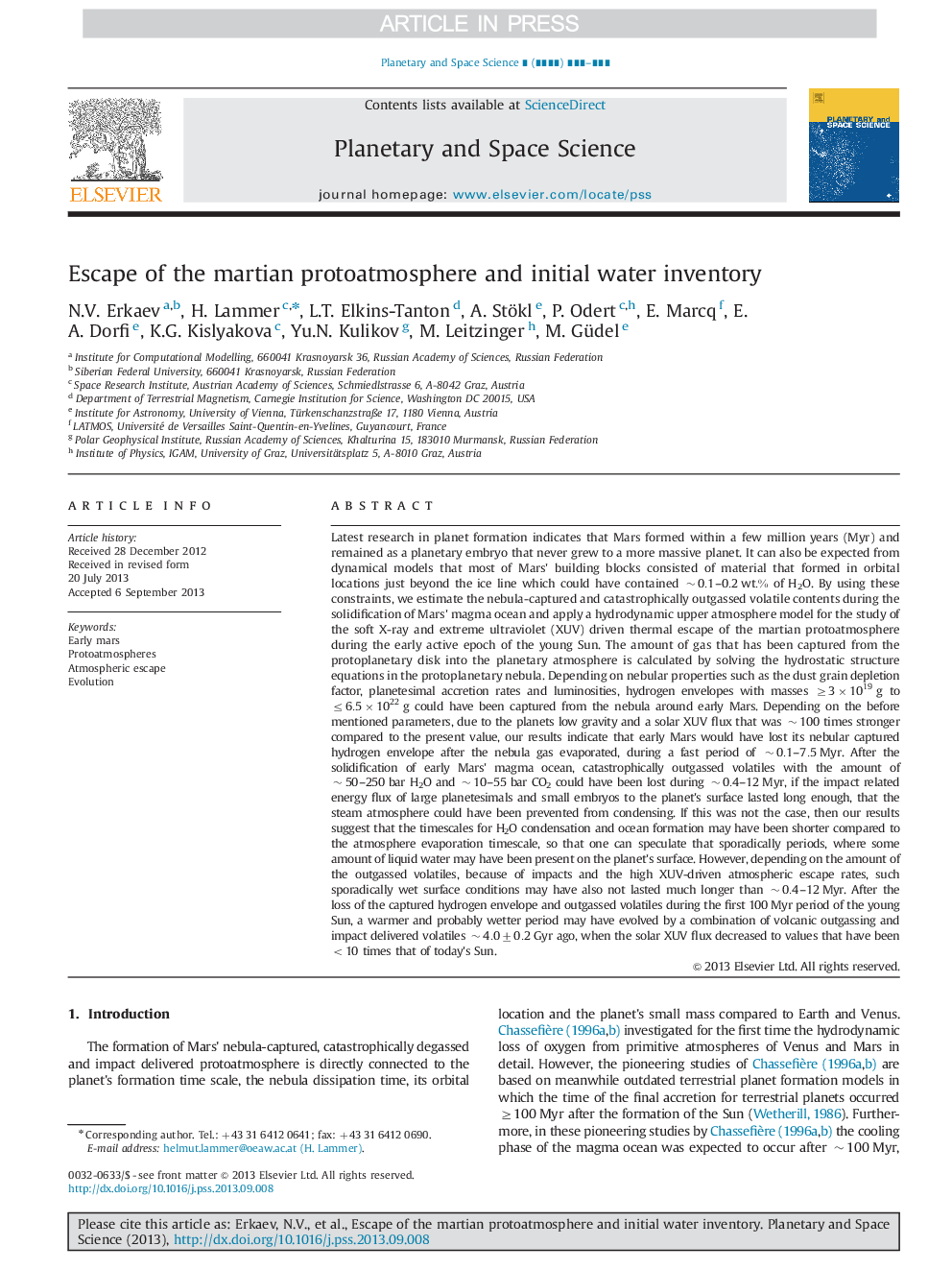| Article ID | Journal | Published Year | Pages | File Type |
|---|---|---|---|---|
| 8143738 | Planetary and Space Science | 2014 | 14 Pages |
Abstract
Latest research in planet formation indicates that Mars formed within a few million years (Myr) and remained as a planetary embryo that never grew to a more massive planet. It can also be expected from dynamical models that most of Mars' building blocks consisted of material that formed in orbital locations just beyond the ice line which could have contained ~0.1-0.2wt.% of H2O. By using these constraints, we estimate the nebula-captured and catastrophically outgassed volatile contents during the solidification of Mars' magma ocean and apply a hydrodynamic upper atmosphere model for the study of the soft X-ray and extreme ultraviolet (XUV) driven thermal escape of the martian protoatmosphere during the early active epoch of the young Sun. The amount of gas that has been captured from the protoplanetary disk into the planetary atmosphere is calculated by solving the hydrostatic structure equations in the protoplanetary nebula. Depending on nebular properties such as the dust grain depletion factor, planetesimal accretion rates and luminosities, hydrogen envelopes with masses â¥3Ã1019g to â¤6.5Ã1022g could have been captured from the nebula around early Mars. Depending on the before mentioned parameters, due to the planets low gravity and a solar XUV flux that was ~100 times stronger compared to the present value, our results indicate that early Mars would have lost its nebular captured hydrogen envelope after the nebula gas evaporated, during a fast period of ~0.1-7.5Myr. After the solidification of early Mars' magma ocean, catastrophically outgassed volatiles with the amount of ~50-250bar H2O and ~10-55bar CO2 could have been lost during ~0.4-12Myr, if the impact related energy flux of large planetesimals and small embryos to the planet's surface lasted long enough, that the steam atmosphere could have been prevented from condensing. If this was not the case, then our results suggest that the timescales for H2O condensation and ocean formation may have been shorter compared to the atmosphere evaporation timescale, so that one can speculate that sporadically periods, where some amount of liquid water may have been present on the planet's surface. However, depending on the amount of the outgassed volatiles, because of impacts and the high XUV-driven atmospheric escape rates, such sporadically wet surface conditions may have also not lasted much longer than ~0.4-12Myr. After the loss of the captured hydrogen envelope and outgassed volatiles during the first 100 Myr period of the young Sun, a warmer and probably wetter period may have evolved by a combination of volcanic outgassing and impact delivered volatiles ~4.0±0.2Gyr ago, when the solar XUV flux decreased to values that have been <10 times that of today's Sun.
Keywords
Related Topics
Physical Sciences and Engineering
Earth and Planetary Sciences
Geophysics
Authors
N.V. Erkaev, H. Lammer, L.T. Elkins-Tanton, A. Stökl, P. Odert, E. Marcq, E.A. Dorfi, K.G. Kislyakova, Yu.N. Kulikov, M. Leitzinger, M. Güdel,
